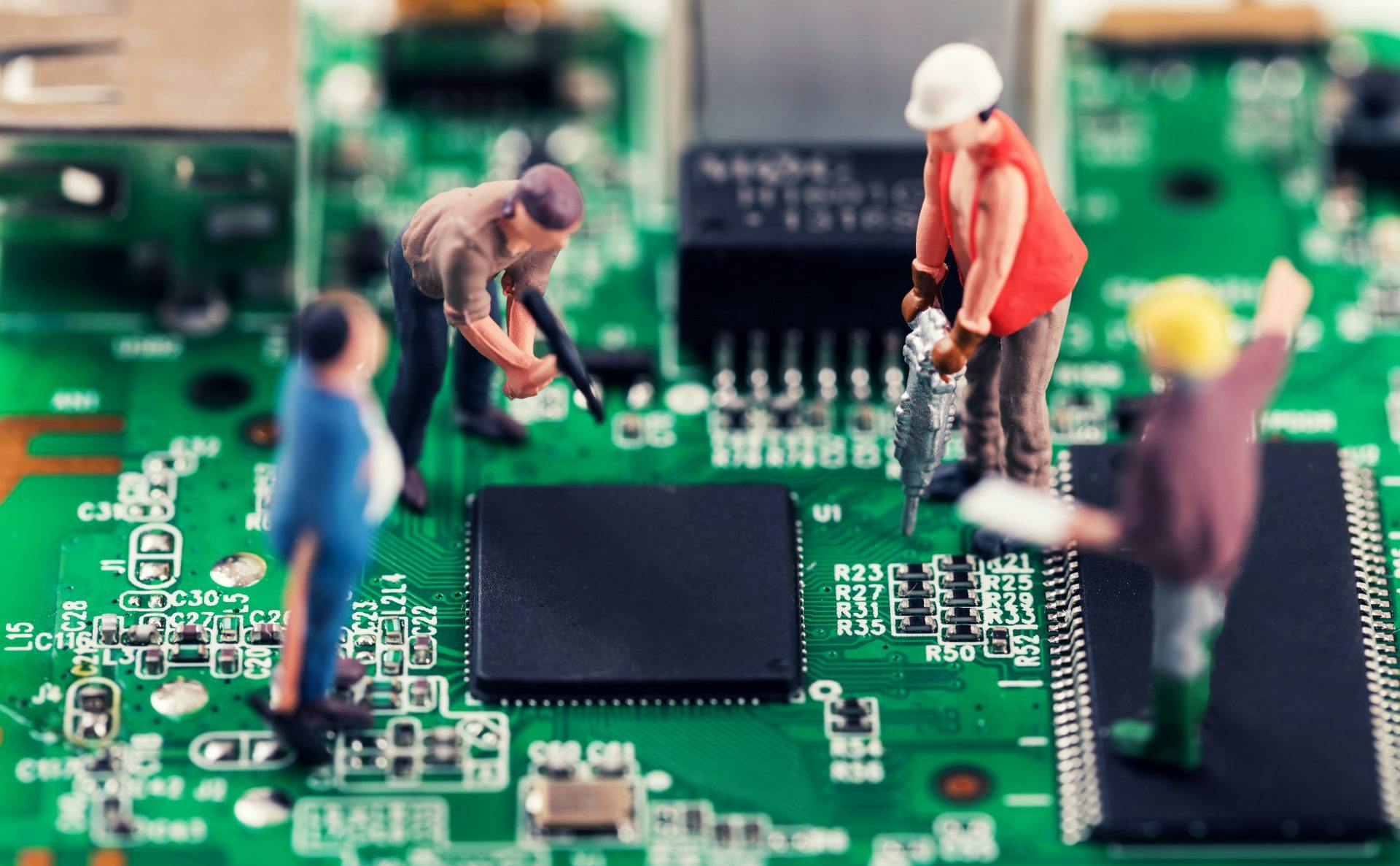Adopting Circular Business Models: Understanding the Potential
Much has been said about the environmental appeal of circularity. But it is equally compelling to look at how financial performance and customer engagement can be made more sustainable with circular business models.
Circular business models have the potential to generate impact on three different aspects of sustainability:
- They protect the environment
- They result in strong and extended customer relationships
- They can translate into increased profit margins
Let's break down these aspects further before exploring real-life cases.
Protecting the Environment by Reducing Greenhouse Gas Emissions and Reaching Sustainability Targets
Depending on the business model's configuration and on how the principles of Reduce, Reuse, Renew and Recycle are applied, circular businesses reduce CO2 and other greenhouse gas emissions considerably. They use materials more effectively and avoid waste. They save energy and utilize products as long and as intensively as possible. Besides emission reductions, circularity can reduce water consumption and prevent the exploitation of natural resources. For example, recycling metals instead of mining them can cause exponentially less environmental and social damage.
The circular value chain is designed to reduce emissions across the entire product lifecycle. The traditional notion of an “upstream” and “downstream” no longer applies in a circular value loop. But we can draw parallels. In the “upstream” phase, products are made by remanufacturing used parts or using recycled materials. This results in material and energy savings. In the “downstream” or use-phase, concepts like sharing, renting, or reselling can lead to substantially better environmental outcomes, compared to the traditional sale of products to individual owners / users.
Building Long-Lasting Customer Relationships With Low Churn Rates
Long-lasting relationships and frequent interaction with customers are inherent to circular businesses. This is especially the case with Reuse concepts, where products are regularly serviced by a circular service provider after one or several use cycles.
In many cases, these service-based relationships are fulfilled using long-term contracts. When service levels are met or expectations exceeded, customers are often willing to renew contracts and maintain relationships with circular service providers for years. Loyal customers might even increase the “share of wallet” and broaden the services that they use.
Securing Attractive Profitability Levels
Circular models provide opportunities to make pricing and payments beneficial for both sides. Service providers can improve revenue generation by tailoring pricing to different service levels, providing smart add-ons or moving from transaction-based payments to subscription models.
Customers in turn, benefit from a “pay as you go” model and steer costs based on how they use or consume products. In other words, they can shift from capital expenditure to operational costs. Long-term and stable customer relationships with low churn rates result in reduced customer acquisition costs. This makes circular businesses financially robust. Many circular businesses offer Product as a Service- models which broaden the options to generate additional income. These types of companies can achieve more reward with less input compared with traditional businesses. On the cost side, circularity can also have an enormous impact. For example, by using recycled material instead of more expensive virgin material or by reusing products and parts as much as possible.
Circular Business Models in Practice: Electronics and IT Equipment
Let’s explore the impact of these benefits in a sector with a huge potential for circularity: IT equipment.
The IT and electronics industry produces a wide range of products we use every day, at our workplaces, at home and even while we are traveling. Think of desktop and laptop computers, printers and mobile devices. All of these are used by companies and private consumers. In addition, everyone relies on data center equipment, such as servers and storage, network, and security devices, all of which are growing steadily in volume thanks to the cloud transition.
Technical developments and the constant need for more computing power and other performance criteria result in the frequent replacement of IT equipment in enterprise settings. In consumer settings, the turnover is even greater as users prefer to always get the newest devices. Each iPhone release is meant to promote exactly that: stimulating millions of users to switch to the next model.
E-Waste and IT Equipment
IT equipment contributes to more than 50 million tons of electronic waste, or e-waste, globally. According to a study by the World Economic Forum, the amount of e-waste will reach 120 million tons by 2050. That is, unless we change how we produce, use and repair such equipment. IT hardware must become circular.
Today’s 50 million tons of global e-waste translate into 7.5 kg per capita, with most European countries generating around 20 kg per person. While 40 % of e-waste in Europe undergoes some type of recycling, the percentage in Asia is just 12%. It’s even lower in North and South America at 9%, according to the UN's Global e-waste monitor report.
Enterprise equipment is typically purchased by companies from equipment manufacturers (OEM) or from IT distributors. For instance, companies like TD Synnex or Computacenter, which provide services globally. After a lifetime of 3 to 4 years, the equipment is handed over to service providers that either recycle it or process it as waste.
From Discarding to Refurbishing
In the future, this could be very different:
- Equipment will be provided as “Product as a Service” to make sure that the right and purpose-fit product is available depending on the requirements.
- After a smarter 1st life cycle, the equipment will be refurbished for another use cycle (lasting a few years), or for a second life.
- At the end-of-life, metals and other valuable materials will be regained via recycling, minimizing waste.
Applying the logic of Product as a Service to IT equipment will be made possible when OEMs or IT distributors expand their service portfolio and put circularity at the center of their activities. They will need to interact continuously with their customers, providing timely responses and flexibility based on changing requirements. The sale of equipment will transform into an ongoing service relationship, based on pricing and remuneration models which provide win-win opportunities for both the customer and the service provider.
Refurbishing the equipment to make it usable in another life cycle provides huge potential. Many company requirements can be fulfilled with reliable equipment that does not need to be state-of-the-art. This can open further revenue streams for the service provider and provide cost savings for companies. Refurbished laptops, for instance, can be made available at 40% of the costs of brand-new products and offered with the same service levels. This is already the case with some of the large laptop OEMs and circular service providers like Egiss or Foxway.
Network components and servers can be made available at half the price of new equipment by specialized service providers, such as Server Monkey or IT Renew. Both options have clear environmental benefits, as they maximize the lifespan of equipment and lead to increased utilization. Greenhouse gas emissions will be reduced, and resource use will be cut down significantly, while product lifetimes will be doubled or even further extended.
Additional environmental benefits can be gained by further increasing the share of recycled equipment and using more advanced technologies and automated processes to recoup materials. Enterprise equipment and mobile devices contain a large variety of precious metals used in small quantities. Given the enormous costs and the social and environmental damage resulting from the mining of virgin materials, it is more than obvious that closed-loop recycling will gain priority in the industry going forward. Besides minimizing the human toll of mining enterprises, the use of recycled materials significantly reduces energy use.
Potential Obstacles to Circularity
Notwithstanding all the potential, there are also obstacles which should not be underestimated. From the demand side and customer perspective, IT managers and buyers have been educated to use and buy the newest and most technically advanced equipment. Will this get in the way of adopting circularity? We don't think so. The logic still applies to high-end use cases but for standard requirements, decision makers will be convinced by the cost advantages. OEMs need to make adjustments in their R&D departments and change the mindsets of their designers and engineers by promoting the importance of repairability and remanufacturing.
OEMs will also need to account for uncertainty in planning and managing use cycles to ensure that demand for certain refurbished products can be fulfilled. These planning challenges can be tackled by gathering data throughout the original equipment lifecycle: from the sourcing and production down to end-of-life processes. This can be challenging since equipment will be passed from one owner to another and under the control of different users over time. It will be essential to generate transparency on the location, usage, and status of the equipment throughout all events in its lifetime. This level of transparency will be a key enabler to manage circular IT, supported by planning tools that are tailored to the specific characteristics of closed loop processes.
Ready to Embrace Circularity?
We hope the benefits and examples discussed in this article inspire you to start driving the shift to circularity in your company and industry. Stay tuned for more articles in this series and contact us to find out how ORTEC can help.
Don't miss out on the next insights
Sign up to our mailing list and be the first to receive our newest insights and digital magazine in your mailbox.
About Sven Seidler
For more than two decades, Sven has been dedicated to make sure that sustainability is well represented in developing and managing companies. He has gained expertise in all aspects of Circularity from managing circular companies and from supporting circular businesses as a consultant with ORTEC. Located in Düsseldorf, Germany, Sven brings in his experience as a former COO of a leading circular service provider with European footprint and many years as a Managing Director at DHL Supply Chain. He combines his business background, also from the waste and recycling industry, with his passion to improve planning processes and in data driven decision making. Sven is always eager to broaden his capabilities and to apply them for companies which experience challenges in their Circular supply chains.



